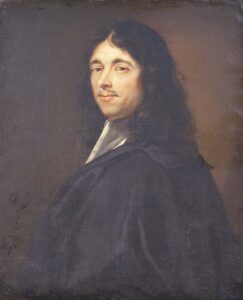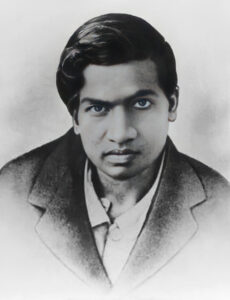At the age of 17, Daniel Larsen was a citizen scientist who made an important contribution to mathematics.
By James Myers
“This problem just got under my skin.” With a curiosity for Carmichael numbers, a particular type of number that looks and acts like a prime number but is not divisible by only 1 and itself, 17-year-old Daniel Larsen sent his groundbreaking theories to an expert in the field who recognized the genius of the high school student.
The teenager “was doing the work of a top-quality PhD student,” stated University of Montreal professor Andrew Granville who, together with W.R. Alford and Carl Pomerance in 1994, proved there are infinitely many Carmichael numbers. Since prime numbers are the basis of computer cryptography, Larsen’s insights on the related Carmichael numbers may prove critically important to resolving the looming cryptography crisis that quantum computing will introduce.
Larsen is now studying mathematics at MIT, but when he wrote to Granville he was a high school student and citizen scientist whose observations and perspectives allowed him to decode part of a puzzle that has challenged mathematicians since Robert Carmichael identified the smallest such number (which is 561) in 1910.
Larsen is a prime example of what citizen scientists can contribute to furthering scientific creativity, at a time when creativity is perhaps most needed. At the beginning of 2023, the journal Nature published a widely-reported study demonstrating a decline in the disruptive, creative aspects of science.
While the study’s measurement bases can be debated, an interesting correlation it makes is in what it calls “linguistic change.” It observed a significant decrease in the numbers of new words used in titles and abstracts of scientific papers and in patent applications, signalling a stagnation of new paradigms and ideas that words otherwise don’t exist to express.
The causes of decreasing creativity in scientific discoveries could be many. Possibly it’s due to the pressure academics now face in generating citations for their work, a widely-publicized measure of authority and popularity that tends to reduce risk-taking in new theories, although the study attributes the decrease to reliance of scientists and inventors on “a narrower set of existing knowledge.” Knowledge accumulates from within, the study concludes, requiring engagement with the full breadth of a subject for greatest discovery. Another possible cause, highlighted by the Harvard Business Review, is time pressures, which reduce the amount of thought that can be applied in the race to develop and commercialize technologies.
In an earlier article, Nature points to a causal link between creativity and the brain’s default mode network, which is active when the mind is disengaged from the outside world and absorbed in the introspective process of recalling the past and imagining the future. In a time when technology has significantly shortened our attention spans and surrounded us with a flood of information, the default mode network becomes strained and creativity can suffer. We wind up doing what we have always done, because there isn’t enough time to imagine anything different.
When there is so much scientific data to integrate into new theories, citizen scientists can be particularly helpful. What can someone not trained academically in science contribute to new discoveries? To begin with, like Daniel Larsen they can bring fresh perspective to bear on long unresolved issues with their questions.
When a researcher is focussed on the question “how” a process can be completed, the citizen scientist might ask “why” the process would exist in the first place – and the “why” question can lead, sometimes, to the first principles of a matter.
I’ll give two other examples of citizen scientists who saw what others did not: Pierre de Fermat and Srivinivasa Ramanujan. There could be many others like them now, waiting to be discovered, having insights drawn from observing general principles with unique perspectives that are not burdened by a sometimes overwhelming amount of specific information.

Lawyer and amateur mathematician Pierre de Fermat. Image: Wikipedia
Fluent in six languages, Pierre de Fermat (1607-1665) was a French lawyer whose passion as an amateur for mathematics, a subject in which he had not been schooled, has provided a lasting legacy to the science.
In fact, Fermat is cited at the outset of the 1994 proof by Alford, Granville, and Pomerance of the infinitude of Carmichael numbers, which makes reference to Fermat’s Little Theorem:
“On October 18th, 1640, Fermat wrote, in a letter to Frenicle, that p divides ap-a for all integers a, whenever p is a prime. The question naturally arose whether the primes are the only integers >1 that satisfy this criterion, but Carmichael pointed out, in 1910, that 561 (=3 x 11 x 17) divides a561 – a for all integers a.”
Fermat’s theorems were often expressed in letters to friends, mostly without what would now be called rigorous proofs. Perhaps his most famous, now called Fermat’s Last Theorem, was made as a marginal note on a copy of the ancient work Arithmetica by Diophantus. Fermat’s Last Theorem states that for the Pythagorean theorem that we all learn in school, a2+b2=c2, 2 is the maximum for such a relationship of any three positive integers. Fermat’s note indicated that he had a proof that was too long to fit in the margin, but the proof was never revealed. It would take 357 years for a proof to be produced, in 1994, by Andrew Wiles, using elliptic curves and other advanced methods.
Fermat was also the first to have evaluated the integral of general power functions and relate it to the sum of geometric series, insights which were used by Isaac Newton and Gottfried Leibniz in the development of modern calculus on which so much of today’s technology relies.

Accounts clerk and amateur mathematician Srinivasa Ramanujan. Image: Wikipedia
Srinivasa Ramanujan (1887-1920) had almost no formal training in pure mathematics, yet his contributions to the science endure to today in the study of the mysterious black holes that are at the centre of all galaxies, including our Milky Way.
At the age of 17, Ramanujan’s intuitions led him to discover, independently, the Bernoulli numbers, so named after Jacob Bernoulli whose work was published in 1713. Bernoulli numbers are now frequently used in analysis, a branch of mathematics concerned with continuous functions, limits, and related theories.
Born into and raised in poverty in India, in 1910 Ramanujan was fortunate to have met V.R. Aiyer, the founder of the Indian Mathematical Society who worked at the government’s revenue department where Ramanujan was seeking work. On seeing Ramanujan’s mathematical notebooks, Aiyer declared, “ I was struck by the extraordinary mathematical results contained in [the notebooks]. I had no mind to smother his genius by an appointment in the lowest rungs of the revenue department.”
The rest of Ramanujan’s story has gained legendary status, and entered into the popular imagination with the 2016 film The Man Who Knew Infinity, in which Dev Patel played Ramanujan and Jeremy Irons played famed Cambridge University mathematician G.H. Hardy. Ramanujan wrote an extraordinary letter to Hardy in 1913, accompanied by 11 pages of mathematics that were sufficient for Hardy to declare it was “the most remarkable” he had received and to invite Ramanujan to study with him at Cambridge. The letter, written while Ramanujan was an accounts clerk at the Madras Port Trust office earning the meagre annual salary of £20, contained, among others, this theorem that amazed Hardy, involving as it does the Gamma function. The complexity of the mathematics is well beyond my capacity, but one of the things that strikes me about it is that the Gamma of ½ is equal to the square root of pi, which appears in the right-hand side of the equation:

One of Ramanujan’s theorems that amazed G.H. Hardy. Image: Wikipedia
In spite of Ramanujan’s unconventional approach to mathematics and his difficulties with the rigorous proof method that did not relate to his intuitions, he was elected a Fellow of the Royal Society in 1918, only the second Indian to have been recognized with that status.
Ramanujan ended his 1913 introductory letter to Hardy with the following words that expressed the hope of a citizen scientist to share knowledge with one of the greatest mathematical scientists of the time:
“I would request you to go through the enclosed papers. Being poor, if you are convinced that there is anything of value I would like to have my theorems published. I have not given the actual investigations nor the expressions that I get but I have indicated the lines on which I proceed. Being inexperienced I would very highly value any advice you give me. Requesting to be excused for the trouble I give you, Yours truly, S. Ramanujan.”
The fact that Hardy and Ramanujan forged a fruitful and productive relationship in the pursuit of knowledge is testament to the creative impulse of citizen science. It is a lesson to both ordinary people and the experts that knowledge does not exist exclusively in academic settings.
Citizen scientists should be encouraged by these examples. As Daniel Larsen states, “I think this is really a great thing about the number theory community, that people are so welcoming and supportive of new people trying to get into it. So I encourage everybody to try their hand at various problems, and don’t be afraid to write these big names. They will write back.”




A terrific article. Amazing the complexity of mathematics in the 1600s